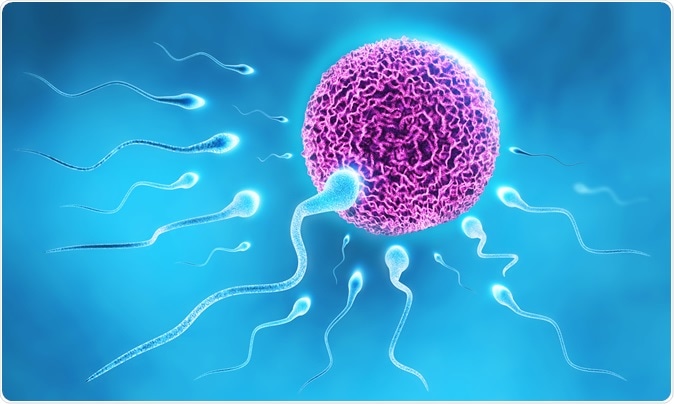There is a lack of definitive data on the actual trends of decline in sperm counts according to researchers despite it being a known fact. Researchers in a new study looked at a large population to find the exact data regarding this scenario and its effects on the society. They looked at the effects of fertility and geographical distribution on the sperm concentration as well as total sperm counts.

Sperm and Egg Illustration: Razvan Ionut Dragomirescu / Shutterstock
For this study the authors collected study abstracts and studies conducted on this topic between 1981 and 2013. They screened the studies and after meeting their criteria for selection, 2510 full articles that looked at sperm concentration were from 185 studies, 244 estimates of sperm concentration and total sperm concentration from 42,935 men.
The samples were provided between 1973 and 2011. Factors looked at fertility data, geographical location ( Northern America, Europe, Australia and New Zealand compared with other regions in east including South America, Asia and Africa), age of the participant, ejaculation, semen collection methods, abstinence time, methods used to measure sperm concentration, semen volume etc.
Complex statistical analysis was used to determine the outcomes from the analysis. A graph plotting the sperm concentration and total sperm counts showed that there was a steady decline in sperm concentration between 1973 and 2011 by 0.70 million/ml/year. The other factors were now considered. It was seen that the decline was significant unselected western population compared to the eastern population (Asia, South America and Africa).
The decline in sperm concentration was on an average 1.4% per year with an overall decline of 52.4% between 1973 and 2011 among population of the West. The decline of total sperm count and sperm concentration among western population was also prominent among the western population at 5.33 million per year. The decline in total sperm count was 1.6% per year and overall decline was 59.3%.
The implications of this study was that there is a 50-60% decline in fertility of men among North America, Europe, Australia and New Zealand. Researchers called for in depth study of this trend.
The report was published in the Human Reproduction Update. According to lead researcher Dr Hagai Levine from the Hebrew University of Jerusalem, this is a worrying trend and does not spell well for the future. He speculates that if this trend continues, humans could soon become extinct. He said that lifestyle and environment could be blamed for this trend and the chemicals we are exposed to may play a major role in the declining sperm counts. Reproduction in general may become difficult and challenging in future leading to extinction of the human race.
The study notes the decline less in South America, Asia and Africa compared to the other continents. This could be because of the dearth of research on this theme in these locations say experts. It is not possible that the declining trends are not the same in these regions they note. Earlier studies have also noted decline in sperm counts in the developed nations but now experts believe that such studies have flawed designs and may not be actual representatives of the true picture. The decline seems to be universal.
Sperm Counts
Low sperm counts is a condition called oligospermia, where the concentration of sperm in the ejaculated semen is too low to promote the natural fertilization of an ovum. It is usually defined as a sperm count below 20 million/ml of semen. Among several cause of this condition are the disease and hormonal disorders such as hypogonadism, Klinefelter’s syndrome, undescended testes, testicular injuries, inflammation or infections of the testes, testosterone, anabolic steroids, chemotherapy, and certain antibiotics or antidepressants, sexually transmitted infections, alcohol and drug abuse, smoking, diabetes, high blood pressure etc. Diagnosis is made on the basis of a semen analysis, in which the quantity and quality of the sperm in a semen sample collected by the man is analysed in a laboratory.
References